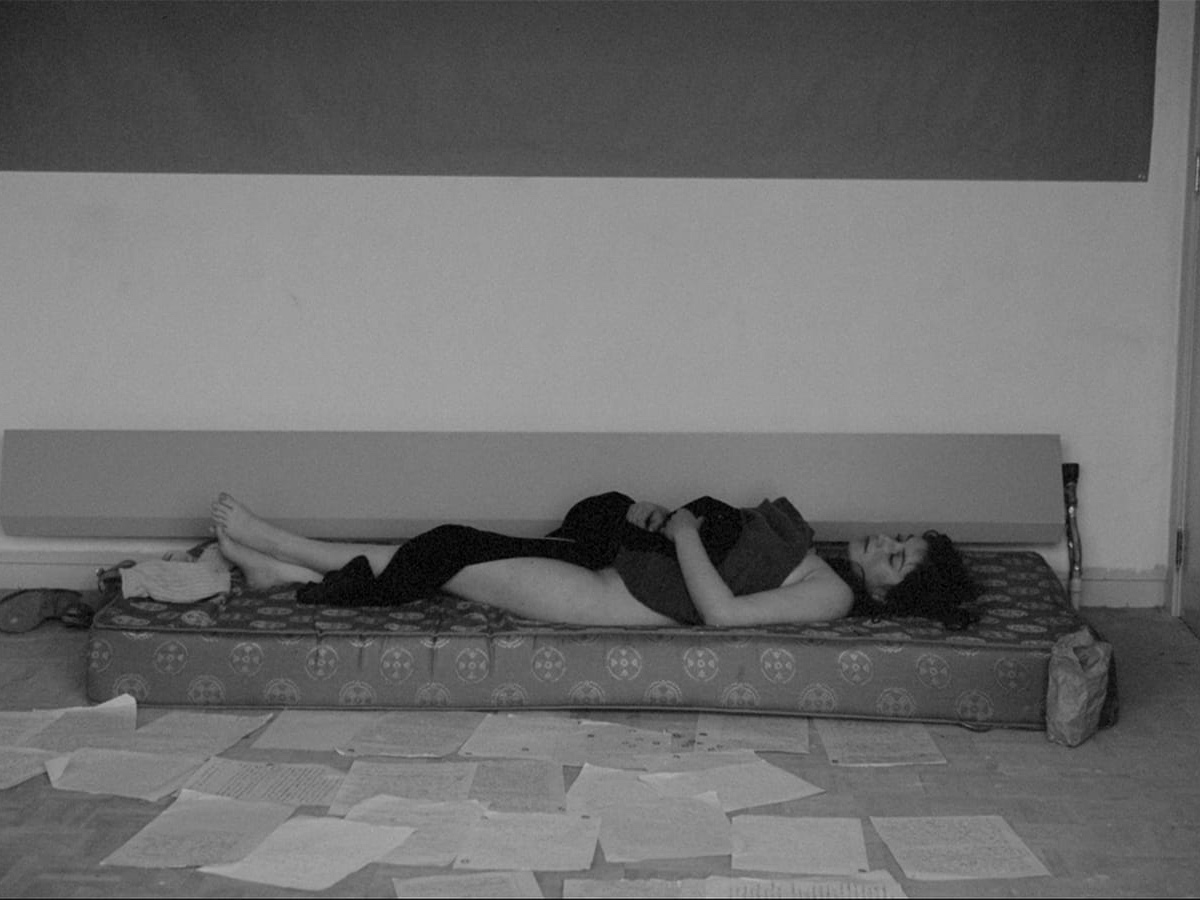
A young girl leaves her town after a difficult love affair and takes refuge in a room in another town. Later she leaves this room, stops a truck on the side of the highway and spends most of the night with the truck driver, a man who could have been a friend. At the end of the road, she finds, probably for a short time, the girl she really loves. Je, tu, il, elle tells the story of the last three moments of a young girl’s adolescence, painfully approaching adulthood, and who will have to give up something of herself to conform to it.
EN
“A similar fate awaited her earlier film Je tu il elle (1974): once it was screened, it was taken up as a paradigmatic lesbian work, much to her chagrin, especially since she starred in it herself and soon grew embarrassed about that performance. In this early conversation, she acknowledges the film’s autobiographical roots, blaming her youth and her immaturity when she wrote the script years earlier, and hilariously insisting that its subject matter isn’t important.”
B. Ruby Rich1
“René Magritte’s painting Man With Newspaper (1927-1928) tells me something about the customary disquiet of Akerman’s world. In it, four panels, two on top and two on the bottom, show the same corner of a sitting room, with one difference: in the first panel a man is seated at the table by the window reading a newspaper, and in the other three panels, neither the man nor the newspaper is in evidence. A narrative is implied between the first and second panel – the disappearance of the man and newspaper – without being confirmed, and we’re left with the eerie fact of three identical ‘empty’ rooms. Similarly, many of Akerman’s settings suggest absence even more than presence.”
Jonathan Rosenbaum2
NL
“De vrouw in de film is Chantal Akerman zelf. Het ‘ik’ van de filmmaker, die spreekt van ‘mijn film’, heeft zich ontdubbeld in een functie achter de film en een plaats vóór de camera. Of men kan de situatie ook beschrijven als een ver-één-voudiging, waarbij het ‘ik’ van de auteur en het ‘ik’ van het hoofdpersonage over elkaar kwamen te schuiven. Het meest wonderlijke is echter de plaats die de cineast zichzelf als actrice heeft gegeven: autobiografisch, zeker, maar nergens documentair ‘gerechtvaardigd’. Het autobiografische heeft hier niets openbarends, is nergens exhibitionistisch, nergens opdringerig, wordt nergens authentiek gemaakt. Het autobiografische verwijst hier niet naar een realiteit, maar naar een stilistische figuur, naar een grammaticale mogelijkheid. Zoals niet alle zinnen die met “ik” beginnen automatisch de waarheid weergeven, zo is het autobiografische hier geen referentie naar het authentieke, het echte, maar naar een mogelijkheid, een ruimte. Een werkplaats. Want de figuur hier in beeld, dit naakte lichaam, dient geen openbaring van een ‘ik’, maar is als de aanduiding en opsomming van instrumenten, van werkmateriaal en spelregels. ‘Met deze middelen, met deze instrumenten, werk ik. Van hieruit worden dingen gedacht en gemaakt.’ Maar de werkplaats is leeg, de instrumenten liggen er mooi geordend, maar onaangeraakt. De maker stond altijd al achter de camera. Zij toont zich niet doende, maar doet al tonend.”
Dirk Lauwaert1
- 1Dirk Lauwaert, “Je tu il elle,” Sabzian, 22 mei 2024. Oorspronkelijk gepubliceerd in Kunst & Cultuur, jaargang 10, nr. 11, 1 juni 1977.
FR
« Je, tu, il, elle est un film unique, pour moi : il reste extrêmement fort parce qu’il est fait avec sa chair, sa peau, sa vie. Quand on dit que quelqu’un a tout mis dans un film, on peut dire qu’elle a effectivement toujours tout mis dans son cinéma, sans artifice. »
Claire Denis1
« C’est dans Je, tu, il, elle que le désir d’Akerman et son regard se forment pour la première fois dans son cinéma. Ce n’est qu’à partir de ce moment inaugural que le désir devient visible dans les films suivants. Comme chez Hitchcock, le désir est énoncé par la désignation d’un regard ; cependant, à la différence d’Hitchcock, le regard se fixe non pas sur une, mais sur trois figures du désir : le moi, un homme et une femme. »
Catherine Fowler2
- 1Claire Denis, “Les hommages endeuillés du monde de l'art et du cinéma à Chantal Akerman,” Libération, 6 octobre 2015.
- 2Catherine Fowler, "'Chantal Akerman's Bobby': du Vertigo de Hitchcock à La captive de Chantal Akerman", Décadrages, no. 46-47 (2022): 60.

